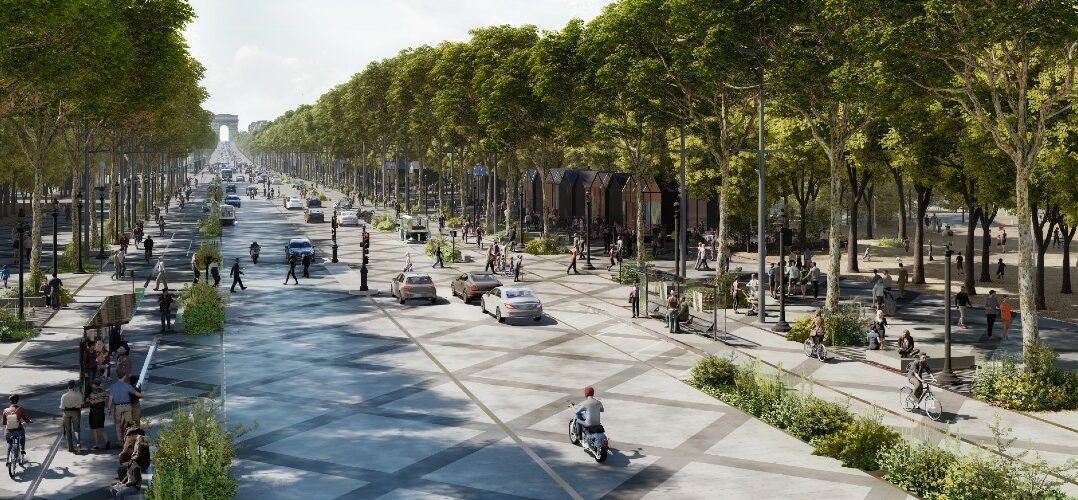How can the world’s main luxury streets, from the Champs-Elysées in Paris to New York’s Upper Fifth Avenue, stay relevant? How can they retain their historic allure as destinations to visit, to remember and to revisit?
London, Paris and Milan, together with Hong Kong and New York, are home to the five most expensive retail streets in the world, according to the annual Cushman & Wakefield report Main Streets Across the World, of which the 2020 edition is due out later this month.
With cross-border travel down 70%, and Covid lockdowns keeping local people at home, rents along these streets have been reset from anywhere between 10 per cent and 35 per cent, says Garrick Brown, Americas head of retail research at Cushman & Wakefield and the report’s author.
When will the international shopper, who keeps the tills ringing, be back? That is anyone’s guess. Do we need to refresh the model of these main streets? “Yes,” says Brown. It’s about rethinking the tenant mix, bringing in new, emerging brands and creating new experiences, especially those that are pop up, one off and unique.
“These streets will be among the first to recover. At their core is density, ease of access and history – which, together with the experience that they offer, is everything that drives people to physical retail.”
However, Brown expects rents to remain significantly lower than the highs of 2019, which saw levels on the Avenue des Champs-Elysées, for example, reach up to €19,000 m2/a year. (They now range, he says, down to €11,400.)
More affordable rents will ultimately breathe new life into these districts, as landlords become more willing to rethink strategies and diversify offerings – Brown
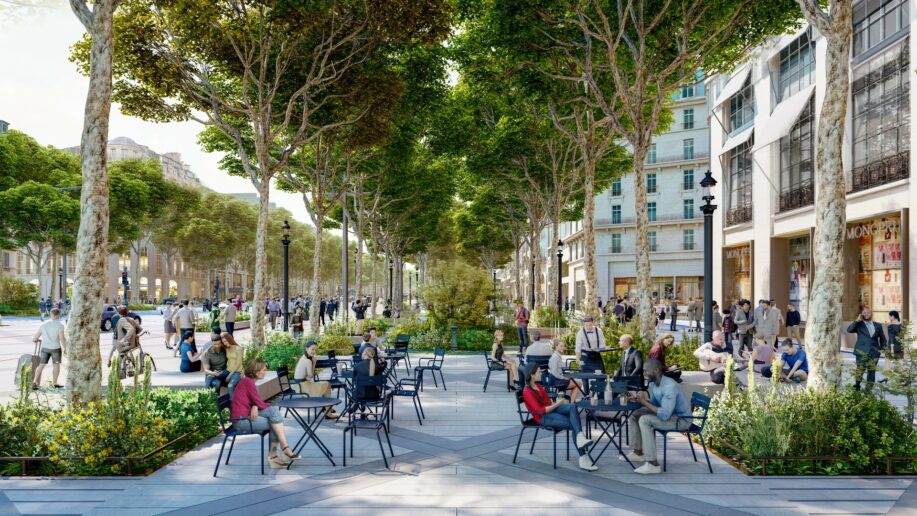
Re-enchanting the Champs-Elysées
The Avenue des Champs-Elysées is the fourth most expensive in the world according to Main Streets Across the World 2019. The avenue stretches 2km across central Paris, from the Place de l’Etoile at the Arc de Triomphe to the Place de la Concorde.
International tourists accounted for over half of the 100,000 people walking daily along the avenue in pre-Covid time. Parisians, meanwhile, made up a mere 5%, deterred by the avenue being “too touristy”, “too noisy” and “too artificial”, and in that order – with some 64,000 vehicles a day trundling up and down the eight lanes of traffic.
The Champs-Elysées is where US actress Jean Seberg sold the Herald Tribune in the iconic 1960 Jean-Luc Godard film Breathless. Traditionally, in those days, it was the place for Parisians to flâner, to stroll – and to watch a film, have a drink, and see the world go by.
The Champs-Elysées has turned into a duty-free shop with a motorway running down the middle – Philippe Chiambaretta, PCA-STREAM
Fast forward to the 21st century and the Champs-Elysées has some of the worst air and noise pollution levels in Paris.
As Philippe Chiambaretta, architect and founder of urban & architectural practice PCA-STREAM, which is leading a study to re-enchant the avenue, told the MIPIM Urban Forum audience this September: “The Champs-Elysées has turned into a duty-free shop with a motorway running down the middle.”
The upper section of the avenue, from the Arc de Triomphe to the Champs-Elysées Roundabout, is home to the big fashion and lifestyle brands. It was here that Nike bought No. 79 for €613m last autumn for its Nike House of Innovation, while in spring 2018 Hines and Universal-Investment bought No. 114, let long term to Apple, for €600m.
Cities need to … be about the community rather than the individual; and to be about more than just the human – to be about restoring ecosystems and achieving carbon neutrality – Chiambaretta, PCA-STREAM
Stretching either side of the lower section, in the part leading to the Place de la Concorde, are the 24-hectare Champs-Elysées Gardens. Covid or no Covid, the gardens are empty – attracting only 20% of the flows of the much smaller nearby Monceau park.
“The gardens are a hidden gem,” said Gautier Machelon, co-founder of data specialist, MyTraffic, which worked on vehicle and pedestrian flow data for the Champs-Elysées, and who joined Chiambaretta on the podium at the MIPIM Urban Forum session on Data & Cities. “These gardens urgently need to be redesigned so that Parisians can regain ownership of the area.”
As Chiambaretta said: “Cities need to be desirable. They need to bring wellbeing and wellness for those who live and work in them; to be about the community rather than the individual; and to be about more than just the human – to be about restoring ecosystems and achieving carbon neutrality.”
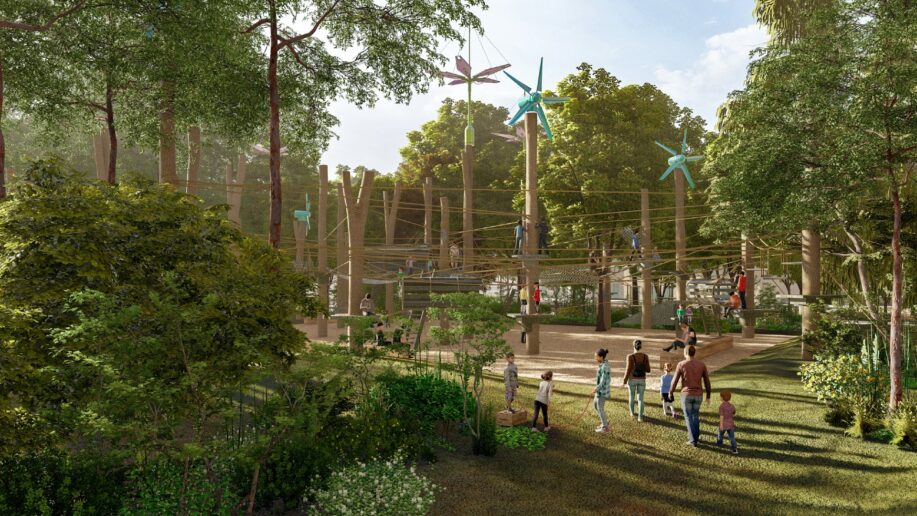
The study that reinvents the Champs-Elysées
How do you turn the Champs-Elysées into a destination for local Parisians? How do you make it about the human? How do you create a greener, more sustainable public space?
This is what PCA-STREAM is looking at, having been commissioned by the Comité Champs-Elysées, the organisation that brings together the boulevard’s main public and private stakeholders and who is all too aware of the need to take a more holistic approach.
A biodiverse, green space (see MIPIM World Blog Creating Resilient Public Spaces with Nature) is key to providing mental and physical wellbeing. The Champs-Elysées was conceived some 300 years ago, during the reign of Louis XIV. The avenue was originally designed to show the power of geometry and mathematical conclusions.
“The Champs Elysées was a symbol of the human project to tame nature – a ‘zero milestone’ of western modernity, which led humankind to the Anthropocene and the Urbanocene,” said Chiambaretta.
This most recent study to re-enchant the Champs-Elysees sets a vision for 2030. At its heart is the idea of reclaiming space for pedestrians from the car, with more greenery and improved air quality. This vision includes:
- A 78-hectare central park in the heart of Paris.
- More trees and planted ‘lounges’ along the avenue.
- The intersections at Concorde and Étoile becoming public plazas.
- A curated programme linked to fine cuisine, sports, wellbeing, arts & science; a new, pedestrian promenade lined with catering kiosks; and children’s playgrounds.
Using data to better understand the “complex” city
“Like the human body, cities are highly dynamic, difficult to understand and subject to all kinds of stresses,” Chiambaretta told the MIPIM audience. In short, cities are complex, with the meaning of the original Latin word complexus reflecting the idea of being woven together.
“It is this togetherness that makes the world not only richer but much more interesting, » said Chiambaretta, quoting French sociologist and philosopher Edgar Morin, now 99 and still writing.
With this in mind, PCA-STREAM has been working with the idea of five urban layers, representing: nature, mobility, usage, architecture and infrastructure.
These “metabolic” layers have been woven into CityScope Champs-Elysées, an interactive data-driven simulation platform developed by the City Science group of the MIT Media Lab in Boston.
The model serves as a communication tool, comparing current with forecast scenarios. “It’s about getting citizens and cities involved,” said Arnaud Grinard, research scientist at MIT Media Lab.
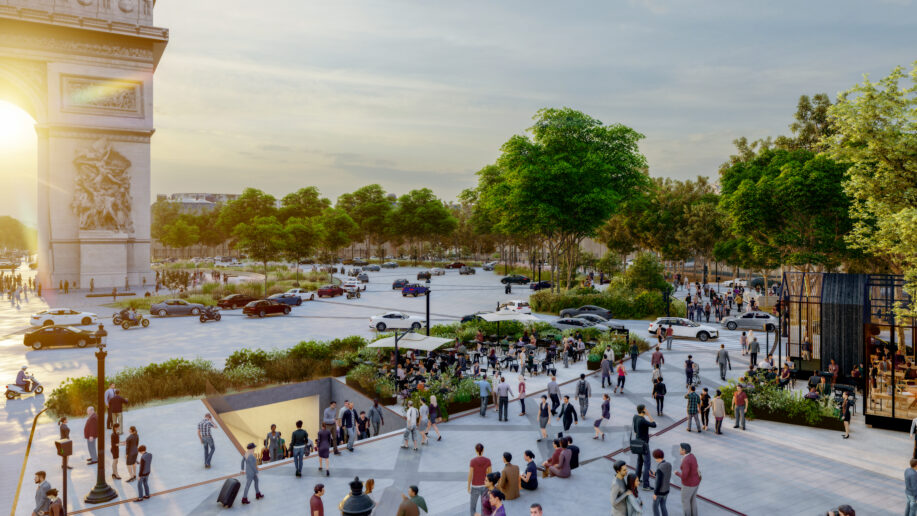
Going beyond data to build civil appropriation
To rethink our cities, we also need to go beyond data. “It’s also about ensuring civil appropriation,” said Axel Dauchez, CEO of Make.org, a civic tech actor and an independent platform for citizen mobilisation.
Citizens are often seen as “objects”, Dauchez told the MIPIM Urban Forum audience. “Objects that can be analysed and that generate data.”
The real question is about engagement , he said. “The societies we live in are fragmented, sometimes hyper-fragmented, and the usual collaboration tools don’t always work well.”
« A consultation should not be a place where people only express their consent or their disagreement. A real consultation must allow the largest number of citizens to suggest their ideas and solutions to solve a problem. »
We are not trying to analyse who is in favour and who is against. We are trying to identify the few points that we need to work on all together to find a consensus – Axel Dauchez, Make.org
At the heart, it’s about consensus. “We are not trying to analyse who is in favour and who is against. We are trying to identify the few points that we need to work on all together to find a consensus.”
So far, nearly six million people, on a European level, have taken part in the Make.org online platform since it was founded in 2016. The platform works by asking an open question of general interest. In this case, it was “What would you like to change to re-enchant the Champs-Elysées?”
Respondents then make proposals, and others vote on those proposals. Algorithms measure the engagement and support for each proposal, with the system designed to block trolls and to ensure that interest groups are not able to influence the results.
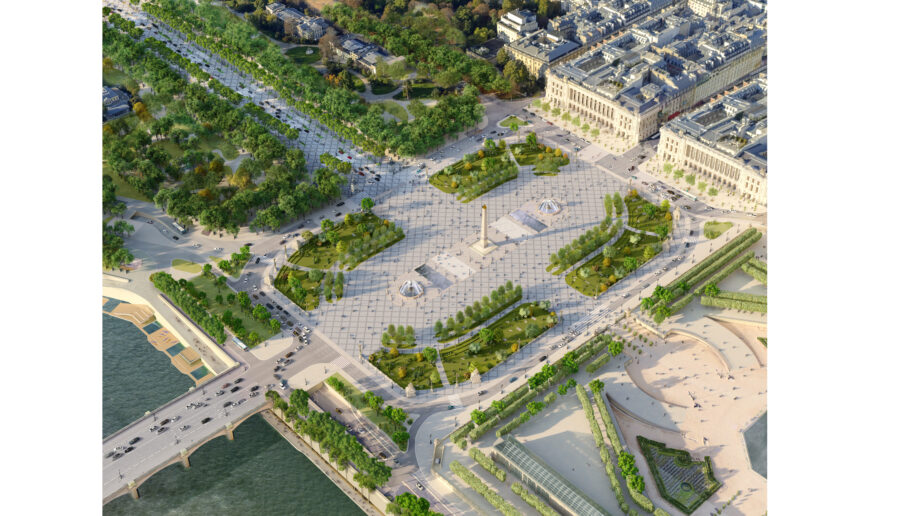
The platform looks to reach half the population and to have 10 per cent of those reached on board. “That is how you can build appropriation,” Dauchez said. Nearly 100,000 local citizens replied to the question about “re-enchanting” the Champs-Elysées, generating nearly 2,000 proposals and 500,000 votes. “This was how we managed to identify the consensuses and the controversies among French citizens”, said Dauchez.
The citizens’ priorities were:
- More greenery and pedestrian walkways, and associated landscaping projects, such as public toilets and benches.
- With regards to heritage, to keep the symbolism of the Champs-Elysées and of the neighbourhood’s 19th-century Haussmann buildings.
- Fewer chain stores and more stores that promoted French know-how.
- The right balance with regards to public mobility: to reduce the place of cars, but not for the car to disappear.
- Greater safety, security and cleanliness.
The Make.org question returned a consensus with regards to promoting indoor cultural activities, but differing views prevailed over the holding of outdoor cultural events and concerts.
Neither did the citizens want to lose the avenue’s symbolic cobblestones. That could be where consensus needs to be achieved, as the plan by the Comité Champs-Elysées envisages the replacement of the cobblestones with a low-noise surface.
Jean-Noël Reinhardt, president of the Comité Champs-Elysées, said: “We have but one wish: for us to pass on this contribution … It would be a sign that the baton has been handed over and that an ambitious project for the Champs-Élysées avenue and neighbourhood would materialise during the next mayoral mandate.”
The mayor of Paris, Anne Hidalgo, appears to be on the same page. As part of her re-election campaign this spring, she talked about the need for a central park for Paris, and to reclaim public space for citizens. We need a population who is “informed, engaged and involved,” she said, while also taking part in MIPIM Urban Forum.
All images: PCA-STREAM
